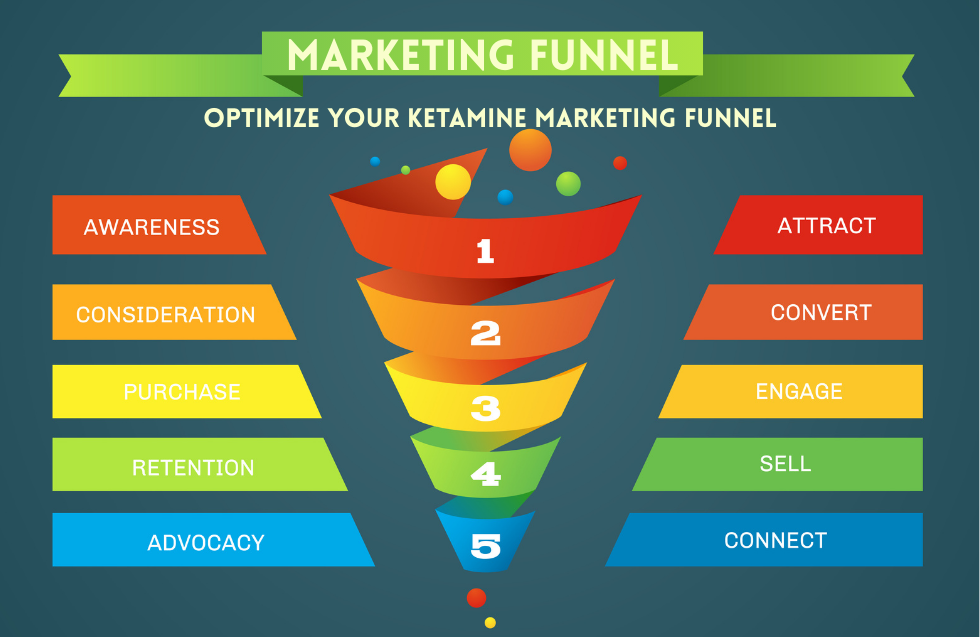Seasonal businesses face unique financial challenges, especially in managing liquidity—ensuring they have enough cash on hand to meet their obligations during slow periods. Liquidity management involves strategies to control cash flow and maintain operational stability, no matter how volatile income may be. In this blog, we’ll dive into what liquidity is, why it’s essential, and how successful seasonal businesses manage it effectively.
What is Liquidity?
Liquidity refers to the ability of a business to meet its short-term financial obligations—such as paying suppliers, employees, or bills—using its available cash or assets that can quickly be converted to cash. In simple terms, liquidity ensures a business can cover its immediate expenses without taking on debt or selling off long-term assets.
Liquidity is vital for any business, but especially for seasonal ones, where revenue fluctuations make managing cash flow more complex. Without effective liquidity strategies, a seasonal business might struggle during off-peak periods, risking insolvency or even closure.
1. Accurate Cash Flow Forecasting
One of the most crucial steps for any seasonal business is to develop an accurate cash flow forecast. This helps to predict the peaks and troughs in revenue, giving you a clear view of your financial health throughout the year. By looking at historical data, you can estimate income and expenses during high- and low-demand periods.
Why it’s applicable:
Forecasting is crucial for seasonal businesses because it helps identify when cash shortages are likely to occur, allowing time to arrange for additional financing or cost-cutting measures in advance.
Key Tip: Build a detailed budget with fixed and variable costs to identify months where cash shortages may occur. This will help you plan for those lean periods.
Example: Christmas Tree Farms
Many Christmas tree farms experience high demand only during the holiday season. To manage liquidity, they use cash flow forecasting based on historical sales data. During peak months (November and December), they generate most of their revenue, which is then budgeted to cover operational expenses for the rest of the year. By forecasting cash flow, they can plan their off-season operations, like tree planting, without risking liquidity issues.
2. Build a Cash Reserve
A cash reserve is a pool of funds set aside during high-revenue months to help cover expenses during slower seasons. Given the cyclical nature of seasonal businesses, having a cash reserve can be a lifesaver during slow periods. Set aside a portion of your profits from peak seasons to create a safety net. This reserve can cover essential expenses such as rent, utilities, and payroll during times of lower sales.
Why it’s applicable:
Seasonal businesses that rely solely on peak-season revenue can face cash shortages during off-peak months if they don’t save adequately. A cash reserve acts as a financial safety net.
Key Tip: Treat your cash reserve as a non-negotiable expense. Regularly deposit a percentage of your earnings into this fund, similar to an emergency savings account.
Example: Ice Cream Shops
Ice cream parlors, especially those in cold-weather areas, experience a massive influx of customers in summer but see a dip in winter. Businesses like Ben & Jerry’s accumulate cash reserves from summer profits to cover rent, utilities, and employee wages in the winter when sales drop. This proactive approach ensures liquidity is maintained even during slow periods.
3. Utilize Flexible Financing Options
Flexible financing involves short-term financial solutions like lines of credit, short-term loans, or invoice financing that can provide quick access to funds during a cash crunch.
Many seasonal businesses rely on financing to maintain liquidity when revenue is down. Fortunately, there are several flexible financing options that can provide you with working capital during off-seasons:
- Line of Credit: A business line of credit allows you to borrow as needed and only pay interest on the amount borrowed. This is ideal for short-term needs, such as payroll or inventory replenishment.
- Short-Term Loans: Short-term loans can provide immediate funds but should be used cautiously due to interest rates.
- Invoice Financing: If you have outstanding invoices, invoice financing allows you to borrow against your accounts receivable.
Why it’s applicable:
Having flexible financing options allows businesses to cover short-term liquidity gaps without depleting their cash reserves or taking out long-term debt.
Example: Retailers (e.g., Ski Shops)
Retailers that sell skiing gear face heightened sales during the winter months. Successful ski shops often secure lines of credit to maintain liquidity during the off-season. They use this credit to stock up on inventory or pay suppliers during slow months and pay off the loan during their peak sales season, keeping operations steady year-round.
4. Negotiate Payment Terms with Suppliers
Negotiating better payment terms allows businesses to extend payment deadlines or set up more flexible payment plans, which helps in managing cash outflows during off-peak seasons.
During slower months, maintaining good relationships with suppliers can help you negotiate better payment terms. Requesting extended payment deadlines or flexible payment arrangements can give you more breathing room when cash flow is tight.
Why it’s applicable:
This tactic helps improve liquidity because it delays cash outflow, allowing the business to preserve cash when income is low.
Key Tip: Build strong communication lines with suppliers and make them aware of your seasonal nature. They may be more inclined to offer favorable terms to retain your business year-round.
Example: Beach Resorts
Beach resorts, which experience peak sales during the summer, negotiate with their suppliers for extended payment terms. Instead of paying for services immediately, they might arrange a 90-day payment period, ensuring they can pay suppliers from summer profits while managing off-season liquidity.
5. Optimize Inventory Management
Optimizing inventory means maintaining the right balance of stock to meet demand without overstocking, which can tie up cash unnecessarily.
For businesses that deal in physical products, managing inventory is crucial for liquidity. Overstocking inventory during slow seasons ties up cash that could be used elsewhere. Implement an inventory management system to track sales patterns and avoid over-ordering.
Why it’s applicable:
For seasonal businesses, effective inventory management prevents cash from being tied up in excess inventory during slow months, improving liquidity.
Key Tip: Leverage just-in-time (JIT) inventory systems, which allow you to order products closer to the time they are needed, reducing the amount of cash tied up in stock.
Example: Halloween Costume Stores
Halloween pop-up shops thrive during October but face little demand afterward. A well-managed store will ensure they don’t overstock costumes. They might even collaborate with costume suppliers for consignment models, where they only pay for inventory that gets sold, keeping liquidity intact.
6. Diversify Revenue Streams
Diversifying revenue streams involves introducing new products, services, or markets to generate income during traditionally slow periods.
Diversifying revenue streams can provide additional cash flow during off-peak months. Consider offering off-season discounts, expanding your product or service line, or tapping into new markets that are less seasonal.
Why it’s applicable:
By offering new revenue streams, a seasonal business can bring in cash flow year-round, improving overall liquidity.
Key Tip: Explore complementary services or products that could generate revenue during your slow season.
Example: Ski Resorts
Many ski resorts, like Vail Resorts, have expanded into summer tourism, offering hiking, mountain biking, and zip-lining to generate off-season revenue. This diversification allows the resort to maintain cash flow during summer months, rather than relying solely on winter visitors.
7. Control Fixed Costs
Controlling fixed costs involves reducing overhead expenses, such as rent, utilities, and salaries, during the off-season to improve liquidity. Reducing fixed costs during the off-season can dramatically improve your liquidity. Identify non-essential expenses that can be scaled back or eliminated entirely during slow periods. This might include negotiating seasonal rates for utilities, insurance, or even rent in some cases.
Why it’s applicable:
Reducing fixed costs allows seasonal businesses to minimize their cash outflows when revenue is low, keeping liquidity intact.
Key Tip: Consider part-time or seasonal staff during off-peak months to reduce payroll expenses, or implement energy-saving measures to cut down on utility bills.
Example: Waterparks
Waterparks often operate only during summer. To manage liquidity during the winter, they reduce staffing to a minimum and shut down parts of their facility to save on utilities. This lean operational structure ensures they don’t spend unnecessarily during off-peak times.
8. Monitor and Adjust Pricing Strategy
Your pricing strategy can play a significant role in managing cash flow. During peak seasons, ensure that your pricing reflects the value you provide and helps maximize profitability. During off-peak months, offering promotions or discounts can attract customers and generate additional revenue.
Why it’s applicable:
Effective pricing ensures that the business can maximize revenue during high demand while maintaining liquidity with off-season sales.
Key Tip: Use dynamic pricing to adjust your rates based on demand. Charging higher rates during peak seasons can help you build a financial buffer for the slow months.
Example: Holiday Home Rentals
Holiday home rental companies often increase prices during peak vacation seasons. To manage liquidity year-round, they offer discounts or package deals during the off-season, ensuring a steady flow of income even when demand is lower.
9. Leverage Technology for Financial Insights
Using financial management software allows businesses to monitor their cash flow, track expenses, and forecast liquidity needs in real-time.
Financial management software can provide real-time insights into your business’s financial health, helping you track expenses, manage invoices, and even forecast future cash flow based on seasonal trends.
Why it’s applicable:
Technology provides instant insight into cash flow and liquidity, helping businesses make informed financial decisions and avoid surprises.
Key Tip: Integrate your point-of-sale system with accounting software to get a complete picture of your financial situation in real time.
Example: Food Trucks
Food trucks, particularly those that operate seasonally in tourist-heavy areas, use accounting software like QuickBooks or Xero to track daily sales and expenses. This helps them manage liquidity by forecasting slow seasons and planning accordingly.
10. Plan for Taxes
Taxes can be a significant expense, and for seasonal businesses, it’s easy to overlook this during peak periods. Set aside a portion of your earnings for taxes, so you’re not caught off guard by a large tax bill during the off-season.
Why it’s applicable:
Failing to set aside money for taxes can disrupt liquidity, leading to cash shortages when tax payments are due.
Key Tip: Consult with a tax professional to ensure you’re taking advantage of any tax deductions available to seasonal businesses, such as depreciation on equipment or home office expenses.
Example: Farmers’ Markets
Many farmers who sell their produce at seasonal markets set aside a percentage of their income for taxes. This ensures that even during the off-season, they have enough liquidity to cover tax liabilities without straining their operations.
Conclusion
Effective liquidity management is vital for seasonal businesses to maintain financial stability year-round. Whether it’s through accurate cash flow forecasting, building a cash reserve, or leveraging flexible financing, these strategies help businesses weather the slow months and thrive during peak seasons. Successful seasonal businesses like ski resorts, ice cream shops, and beach resorts have mastered these techniques, ensuring they remain solvent and profitable despite the cyclical nature of their industries. By adopting these strategies, any seasonal business can better manage its liquidity and sustain long-term success.













